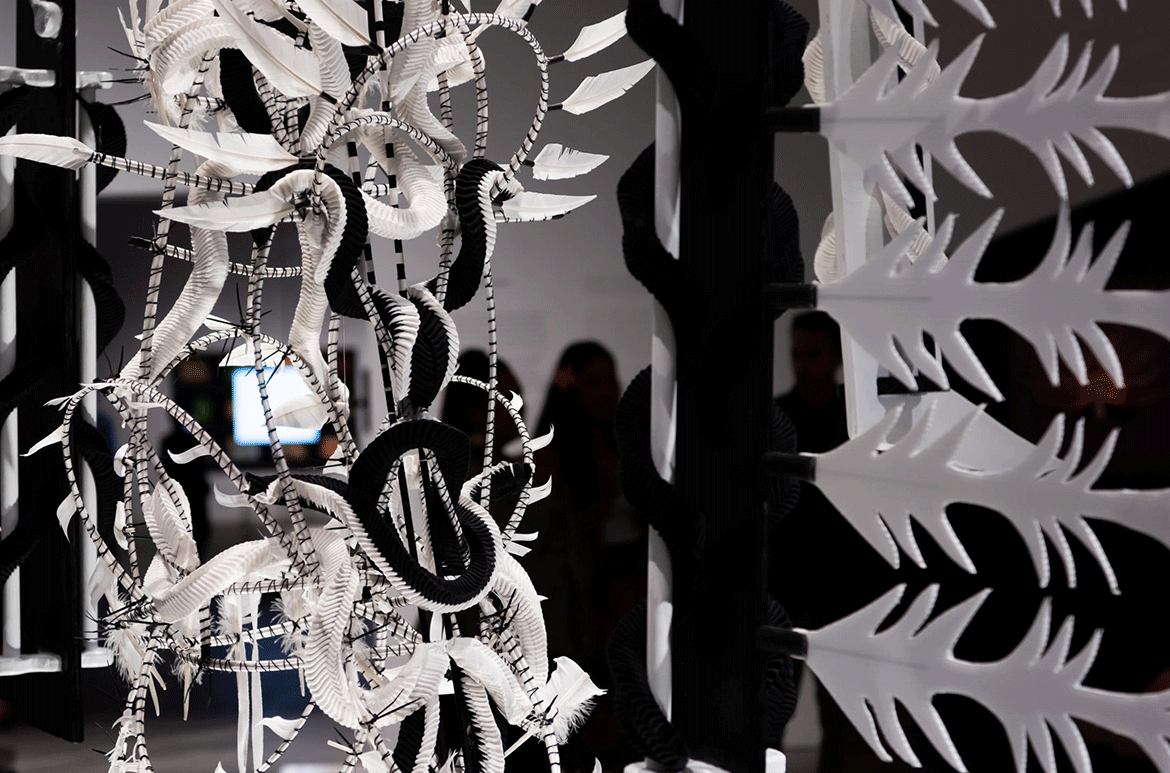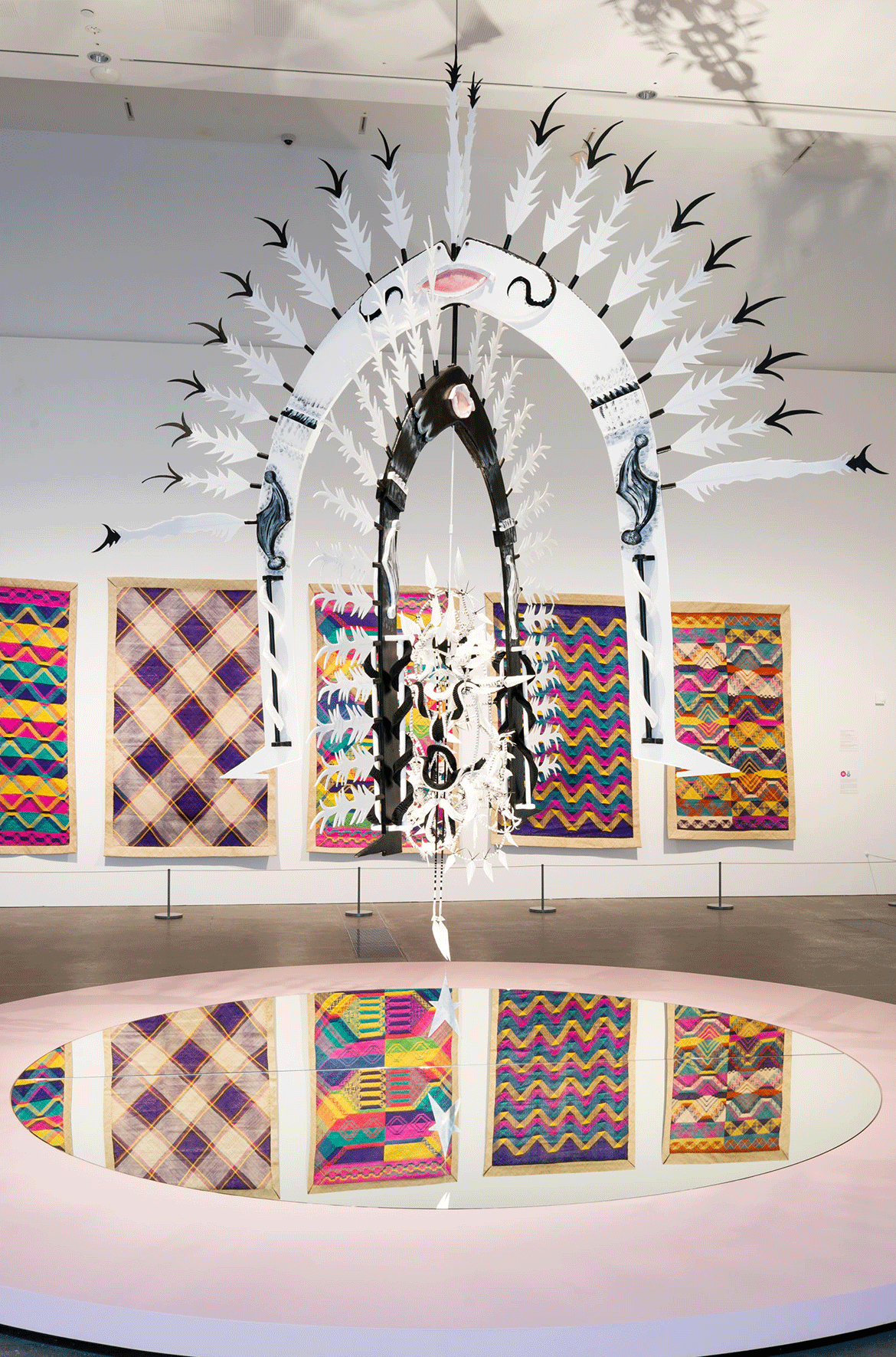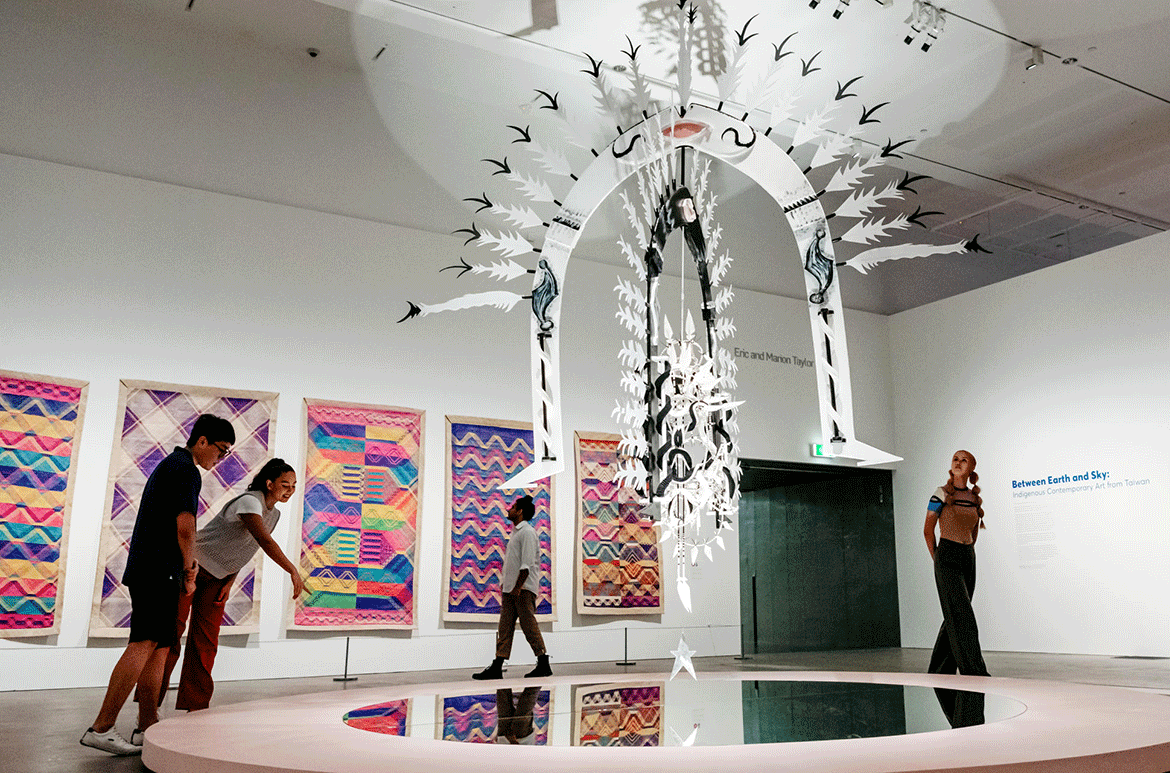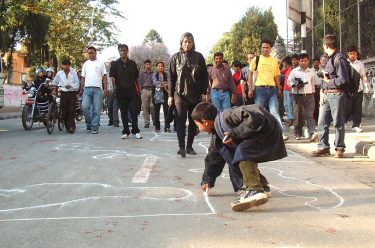Grace Lillian Lee is a proud descendant of the Meriam Mer people of the eastern islands of the Torres Straits. As an artist, designer and mentor, she explores her lineage and identity through weaving and creates fashion, adornments and performances that blur the boundaries of fashion and art. She is known for her unique body sculptures, using a distinct technique derived from the woven grasshopper-shaped toys and hanging ornaments of the Torres Strait Islands. Grace pays tribute to her mentor, Erub artist and ‘The 10th Asia Pacific Triennial of Contemporary Art’ (APT10) collaborator Dr Ken Thaiday Snr, for teaching her the weave.
Thaiday’s unique multidisciplinary practice is rooted in cultural customs and traditional forms using contemporary materials. Through his elaborate articulated ‘dance masks’ and headdresses, designed to be mobilised through performance, he has progressively worked to upscale his into immersive experiences that contemporise the traditional form of the dhari. Suggoo Pennise stands as culmination of his journey — a three-and-a-half-metre dhari sculpture within which Lee and Thaiday have infused significant Mer cultural and environmental references.
Grace Lillian Lee introduces ‘Suggoo Pennise’
The collaborative work Lee and Thaiday have created for APT10 combines and enhances both artists’ respective practices. Standing at over three metres high, Suggoo Pennise 2021 is a uniquely created Dhari (headdress). Adorned with designs that represent the fish traps on Erub (Darnley) Island and the beizam (Torres Strait Creole for tiger shark, a significant totem of the Meriam Clan) jaw motif, Suggoo Pennise contemporises the traditional form of the Dhari, historically worn by Torres Strait warriors in battle. It is a potent symbol of the Torres Strait Island people, appearing on their flag today as an enduring sign of peace and harmony.
The brightly coloured woodcarving designs of the Dhari surround Lee’s central woven body sculpture, using her signature ‘grasshopper’ double weave evolved from the technique Thaiday first taught her. The sculpture represents a blue-ringed octopus. The octopus has many layers of relational significance — its form embodies Malo- Bomai spirituality, which recognises the unification of the eight clans of Mer and the establishment of laws of the land and water by heroic beings, Malo and Bomai.


Read about Asia Pacific artists / Know Brisbane through the QAGOMA Collection / Delve into our Queensland Stories or Australian Art highlights / Subscribe to QAGOMA YouTube
On display in ‘The 10th Asia Pacific Triennial of Contemporary Art’ (APT10) at the Gallery of Modern Art (GOMA). APT10 is at the Queensland Art Gallery and Gallery of Modern Art (QAGOMA), Brisbane from 4 December 2021 to 25 April 2022.
Acknowledgment of Country
The Queensland Art Gallery | Gallery of Modern Art acknowledges the Traditional Owners of the land on which the Gallery stands in Brisbane. We pay respect to Aboriginal and Torres Strait Islander Elders past and present and, in the spirit of reconciliation, acknowledge the immense creative contribution First Australians make to the art and culture of this country.
It is customary in many Indigenous communities not to mention the name of the deceased. All such mentions and artworks are with permission, however, care and discretion should be exercised.
#APT10QAGOMA #QAGOMA


